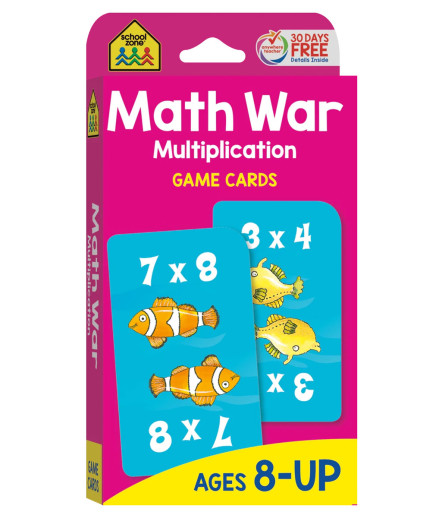We use cookies to make your experience better. To comply with the new e-Privacy directive, we need to ask for your consent to set the cookies. Learn more.
Math War Multiplication Game Cards
Does your child need help with multiplication but dread learning it? Then turn it into a game! The multiplication edition of our Math War Game Cards is a fun and competitive way to help third, fourth and fifth graders practice their basic multiplication facts. Your child and a friend can play together, each flipping over cards and solving them. The player with the highest card value wins both cards.
My little brother, Stephen, at age 6, loved working addition and subtraction problems. For reasons unbeknownst to me, he got quite a thrill out of just coming up to you and saying, "Hey, 4 + 7 = 11". When he discovered the card game War, he constantly asked people to play it (or one of his many original variations, such as "Looking War"). I think what he needed was a deck of these cards, which seem like such a great idea to me. The flashcard sized cards feature various math facts, and kids will have to answer the problems to find out who wins the match. The Addition and Subtraction set cards have pictures of kids forming the plus or minus signs, and the Multiplication deck is even more colorful, with different sea life illustrations on the cards. Both decks also include wild cards for another twist on the classic game of War. - Melissa


Brightly colored and I hope it catches their attention!
I chose this to promote fact fluency and problem solving skills in a fun and engaging way.
Everyone needs more practice!
To help the children get a good grasp on this math.